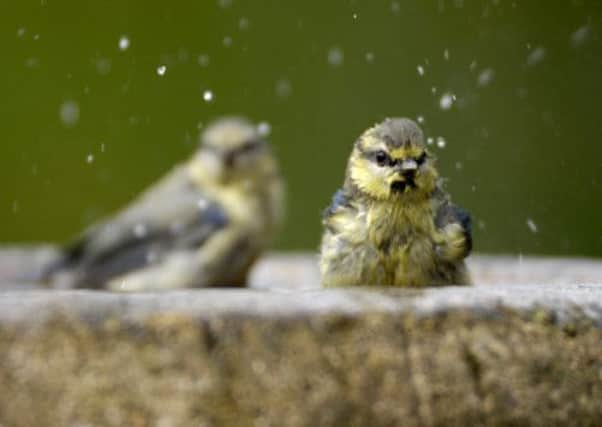Give your garden wildlife a helping hand


Despite the late start to spring, May arrived I suddenly started to notice more and more nature around. The bird breeding season is finally underway – albeit a bit later than usual – migrants have returned from their winters away, and pond wildlife is growing fast.
Although anything is possible when it comes to the weather in this country, temperatures should hopefully be on the rise now, meaning we’ll notice a lot more insects, butterflies and damselflies buzzing about.
Advertisement
Hide AdAdvertisement
Hide AdKeep your eyes out for birds nesting in your garden and if you do spot any, steer clear and leave them in peace – once their little ones hatch peace will be a distant memory for the busy parents!
Now’s a good time lay down the shears, hedge trimmers and the lawnmower and just take time to relax in your outside space.
The wildlife in your garden will appreciate it and it means you’ll get a rest too!
Despite recent wet weather, a drought is never off the cards. To us gardeners, water is pretty important, so it might be a good time to consider getting a water butt to collect the rain when it comes so you’re able to re-use it rather than reaching for the hose. If you have one already there’s nothing stopping you from getting another.
Advertisement
Hide AdAdvertisement
Hide AdWatering your plants in the evenings, when the air is cooler, means less water will evaporate, and watering at the base of plants will mean your garden gets enough to quench its thirst.
As hard as it may be, try not to water your lawn if you can.
Grass can cope perfectly well with dry conditions; it may turn a little yellow for a while but saving water here could mean more for your birds.
Water is vital for our feathered friends so make sure there’s always a fresh supply for them to drink and bathe in.
Advertisement
Hide AdAdvertisement
Hide AdIt’s hard to predict what the weather may have in store for us, but if last year’s anything to go by, this summer could be a tough one for us all – people and wildlife.
So, take these few simple steps and you could make a real difference.
I can’t quite believe it’s June already, but with a good start to the month weather-wise it’s more than welcome.
Hopefully we can spend more time outdoors this month, relaxing and enjoying the wildlife around us.
Advertisement
Hide AdAdvertisement
Hide AdOne of the things to look out for in June is adult birds gathering food for fledglings right into the evening.
Most garden birds, even the seed-eating finches, tend to feed their young on insects at this time of year.
You may notice birds taking caterpillars or insect larvae off to their nest, before returning to boost their own energy levels from the bird table or feeder.
In hot weather, keep a supply of fresh water for your birds and avoid putting out dry food such as stale bread, as this can hasten dehydration.
Advertisement
Hide AdAdvertisement
Hide AdIf you decide to take some time out from relaxing in the sun and fancy a spot of gardening, then reach for the gardening tools because there’s still time to fill any gaps in your flower borders with quick-growing annuals grown from seed.
You can also buy flowers in pots from your local garden centre, but they will need to be watered in well and kept moist once planted.
You may have noticed a few tiny pests on your plants, but please avoid spraying, as pesticides will also kill ladybirds and other insects.
Birds such as tits, will eat insects and pests but if greenfly or aphids become a real concern, you can wash them off with a dilute solution of washing-up liquid, which is a much more nature-friendly option.
For more information on how you can use your garden to help the threatened wildlife that lives there, visit www.rspb.org.uk